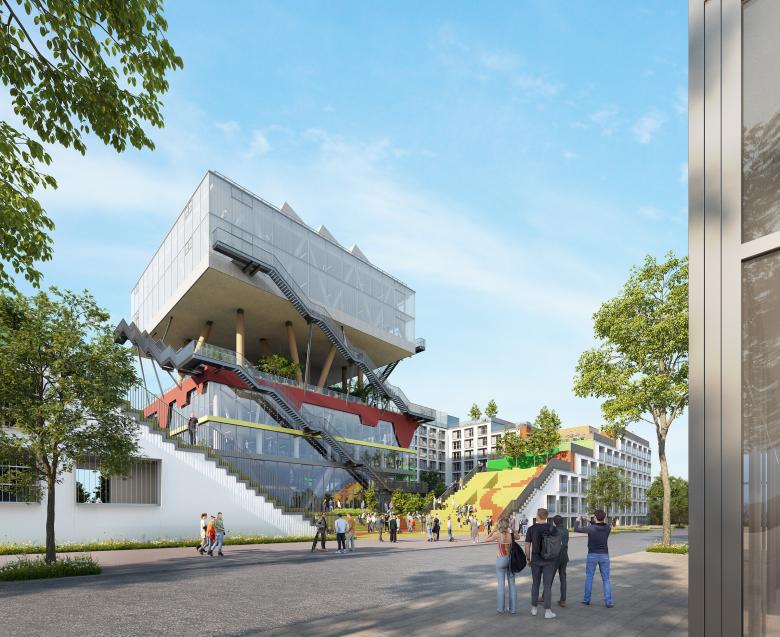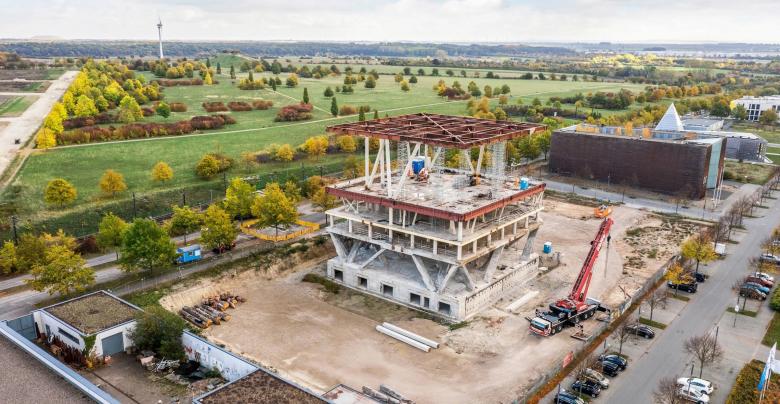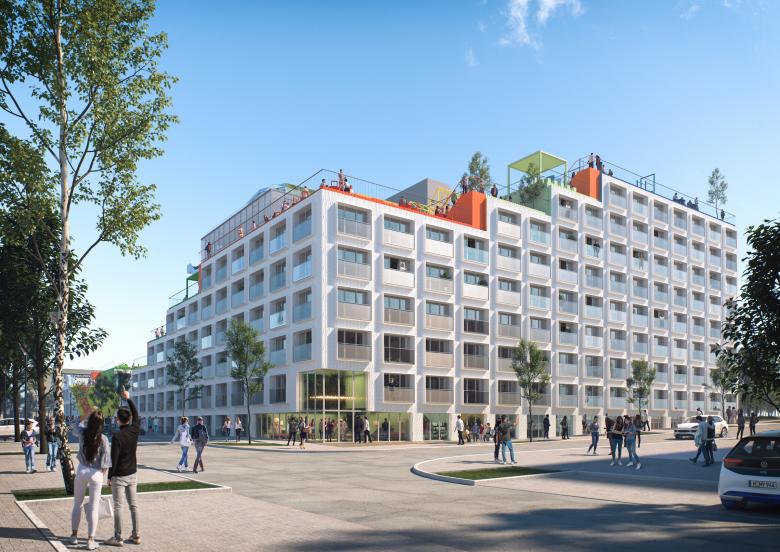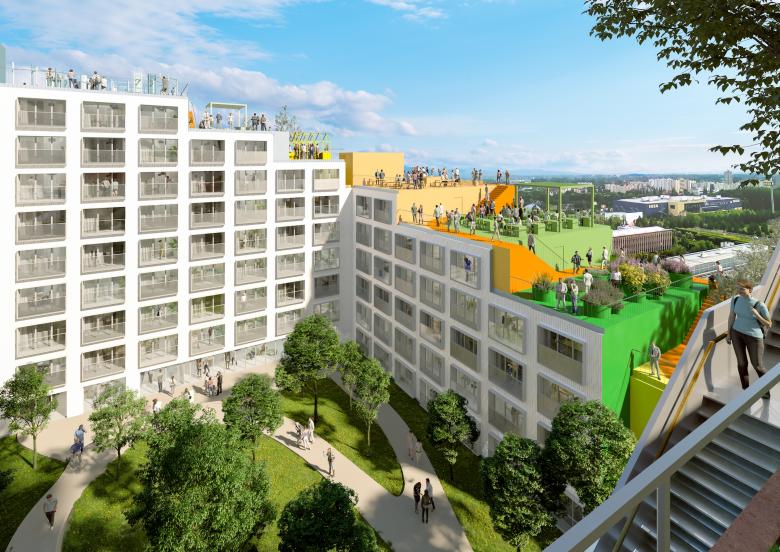A Future for the Dutch Pavilion
Manuel Pestalozzi
29. May 2023
Visualization © Macina
With its stacked landscapes, MVRDV's Dutch Pavilion was a symbol of Expo 2000 in Hanover and one for the future of architecture par excellence. Now, after a long period of neglect, it is being given a second life.
The themes from the millenium are the same today: sustainability, densification, conservation of resources. During Expo 2000, the Dutch Pavilion confidently assembled the themes in a sculptural, seven-story structure that offered an area of half a square kilometer. The levels were planted with soil formations typical of the Netherlands: forests, flower fields, dune landscapes. On the roof, an artificial landscape was created with a lake and wind turbines; water was pumped upwards, creating a cycle.
Photo © Backbone, via Hartmann Architekten)
However, the concept for the pavilion was apparently not considered beyond the duration of the Expo, even though the structure was left standing. It rotted away on the Expo grounds for years. The Dutch landscapes festered, the necessary curation was lacking, and vandalism did the rest. The pavilion became a monument to misunderstood sustainability. The way from lighthouse to "Lost Place" was record-breakingly short.
Visualization © MVRDV
The bad times have finally come to an end. In September 2017, the Hanover-based real estate developer Die Wohnkompanie Nord GmbH, part of the Bremische Zech Group, acquired the building. Under the name hylive, co-working spaces, 380 micro-apartments, and a restaurant are to be created; the pavilion will be joined by two new buildings to form a campus. Future residents can expect a comprehensive range of services, from community areas (lounge, library, fitness room, roof terrace, and bar) to mobility concepts such as car sharing and e-bikes. An open garden is planned for the tall middle level of the pavilion, reminiscent of the Expo platform's previous life.
Visualization © MVRDV
The transformation concept again comes from MVRDV, who have apparently left their Sturm und Drang phase behind them and are now soberly facing up to feasibility and the demands of the market. They are surrounding their 23-year-old experimental tower with new buildings that create a partial block perimeter; these additions should help make the former pavilion economically viable. And things are really getting serious: On May 11, the groundbreaking ceremony for the pavilion's second life took place at the Expo site. Around 60 percent of the micro apartments have already been sold, the housing company attests. Completion of the conversion project is planned for 2025.



